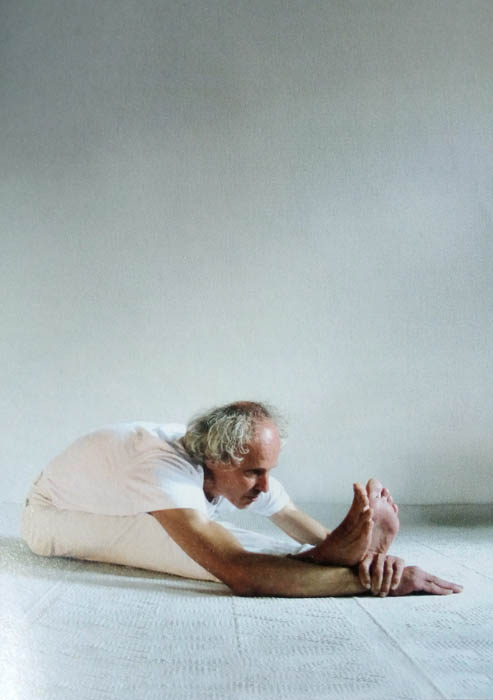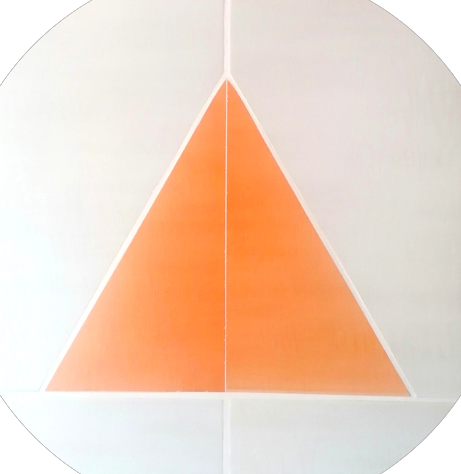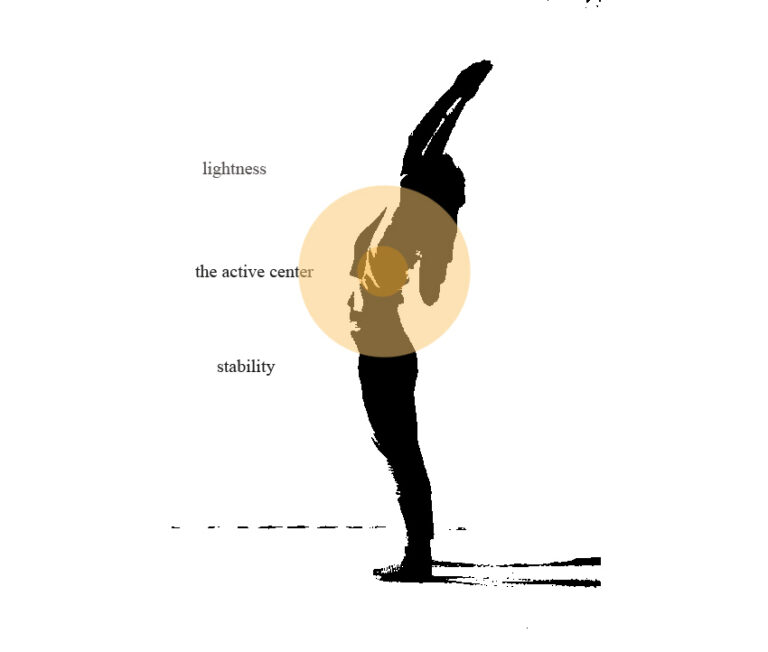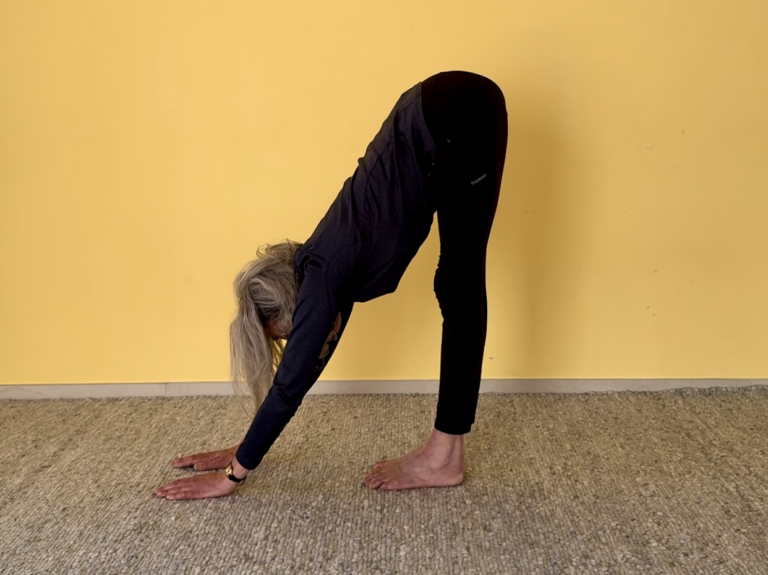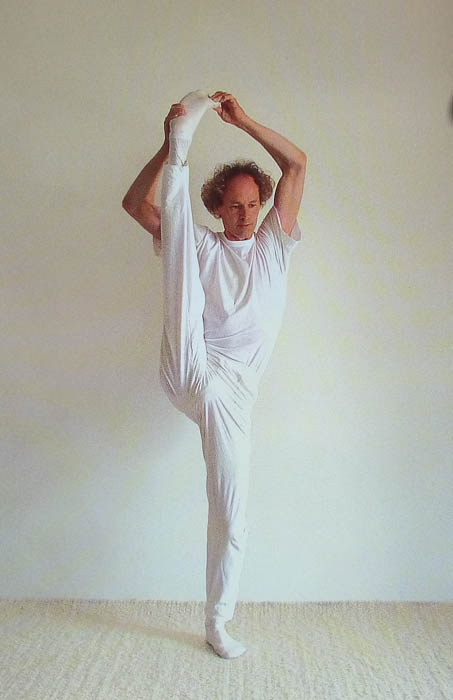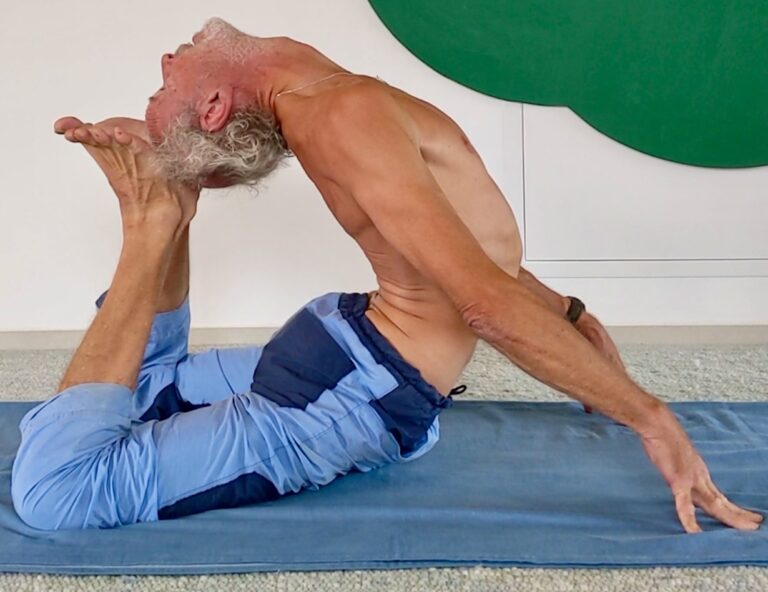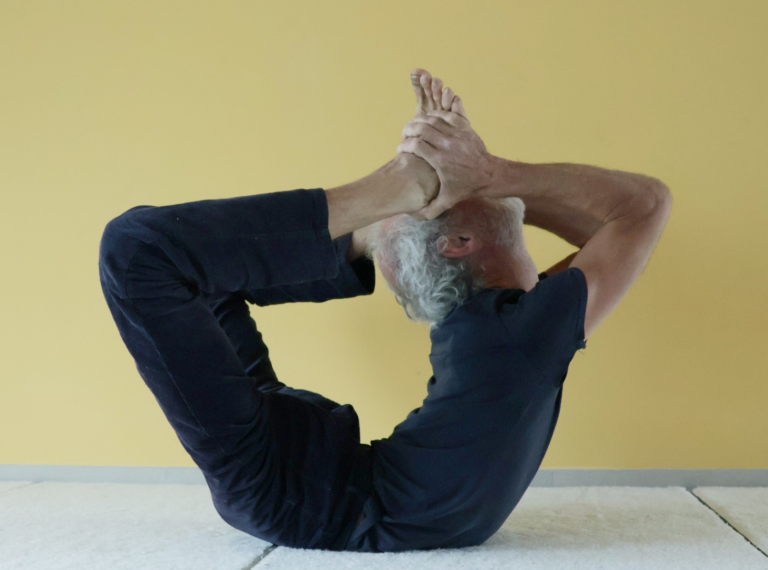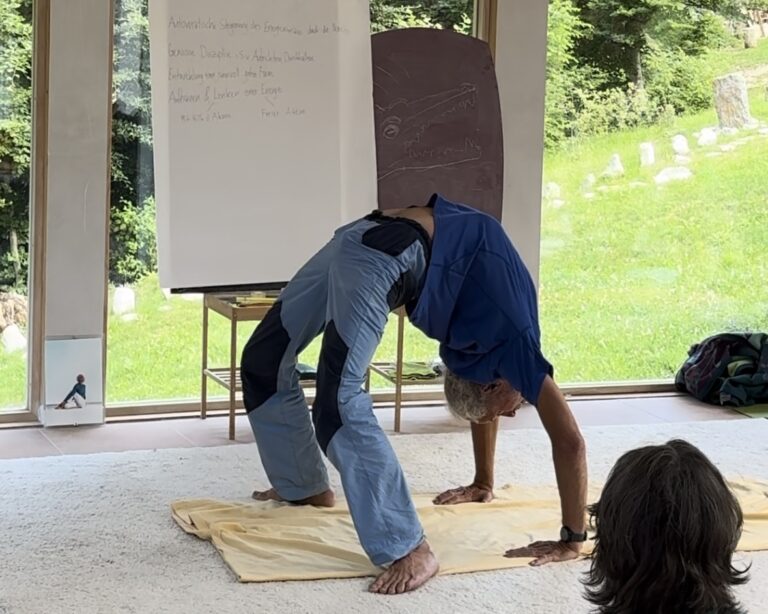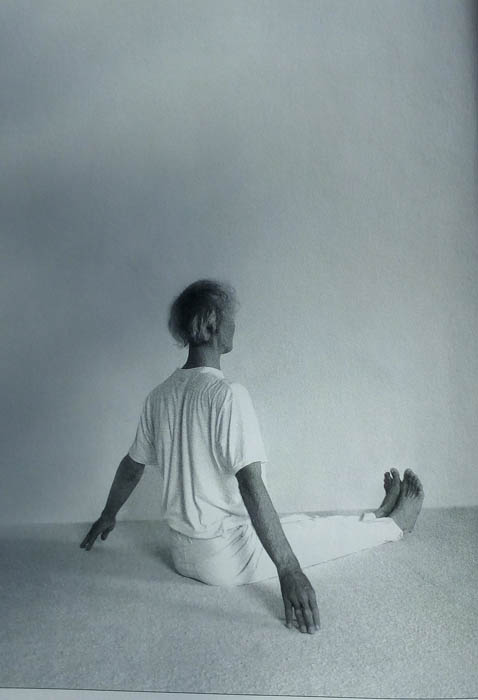
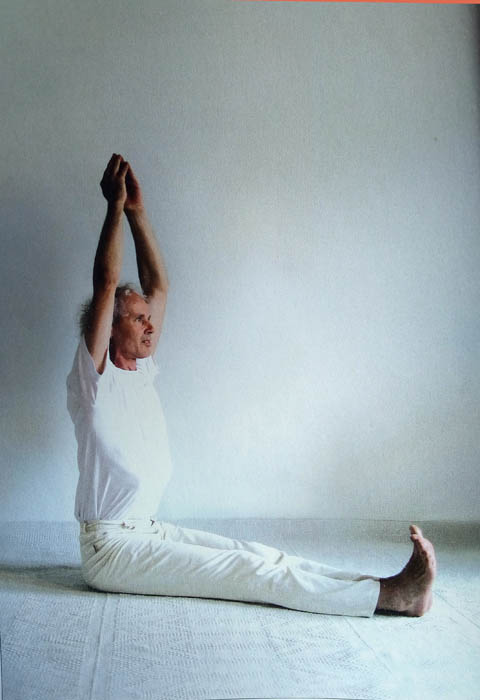
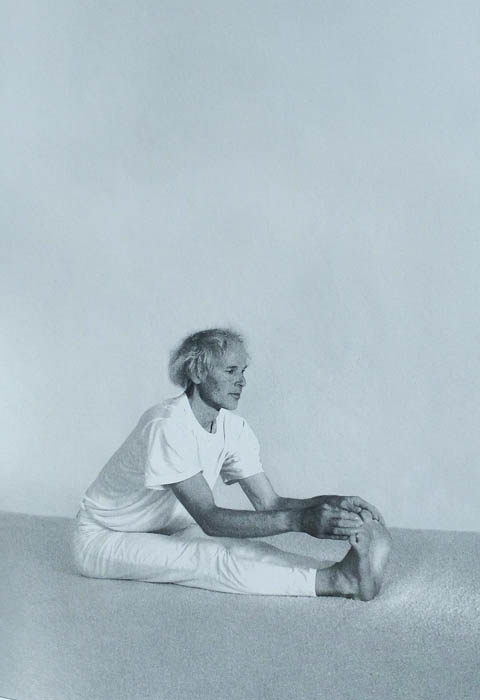
The three-part structure
The three-part structure can be given an even more dynamic expression in the head-knee position. The spine as the central, dynamic axis plays a central role in the seated forward bend position. You can centre yourself particularly well in the area of the central spine. The better you find a centre there, the better you can bring an outflowing dynamic into the whole yoga exercise.
neck/arms – middle of the spine – pelvis
You maintain relaxation in the arms, head and neck, build up tension from the centre of the spine and centre yourself with good support in the hips. You not only learn to tense the whole body, but also to consciously structure and centre yourself in the spine. You experience a connection between the ability to centre yourself very well in the middle of the spine and to dynamise yourself with the help of a created centre. Dynamics and centre work together here in a highly active and lively way.
‘Slide forwards dynamically from the centre of your back and keep your shoulders as relaxed as possible. Hold this tension for some time in preparation until you can finally grasp the feet, ankles or shins after a wide stretch and intensification. When performing the exercise, it is important to achieve the greatest possible stretch and to go beyond the limits of what is possible. This crossing of boundaries is an important part of the exercise.’ (Heinz Grill, The New Yoga Will)
It is important to glide forwards and outwards and not bend forwards. It is helpful to keep the spine as straight as possible and to build up tension towards the front so that the spine does not bend but can develop a dynamic build-up of tension.
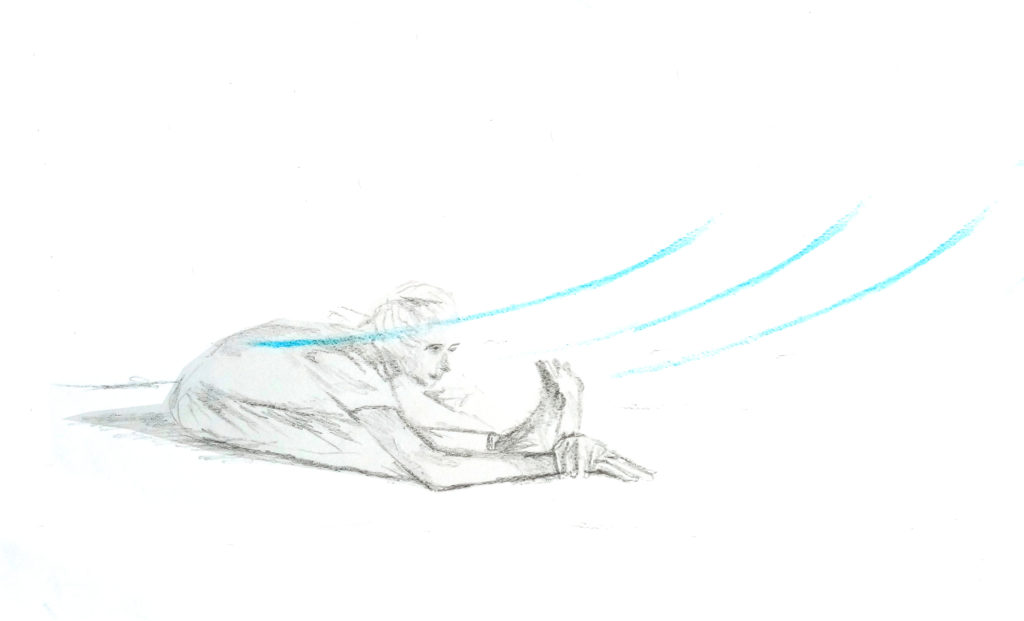
‘An activity is always structured. The sensory system remains observant, and tension develops in the spine and centre of the body, while the body itself is again treated and viewed as a calm base like an instrument.’ (Heinz Grill, The New Yoga Will)
